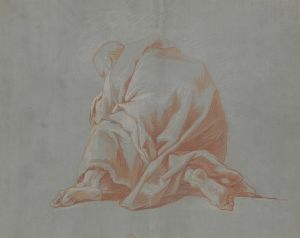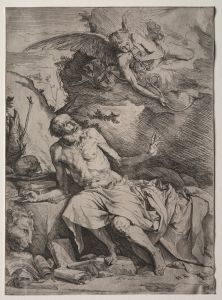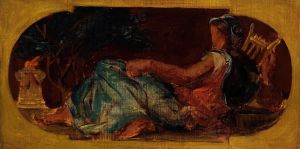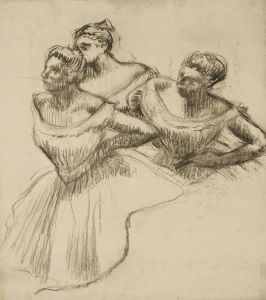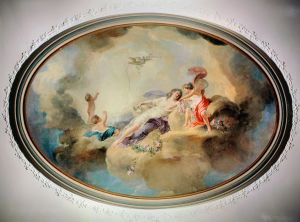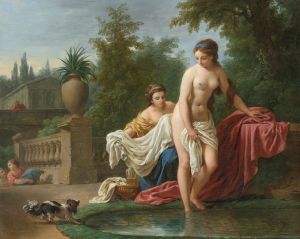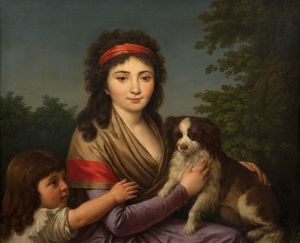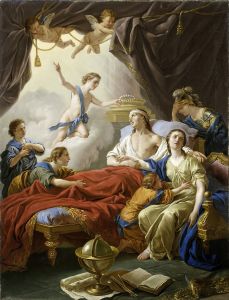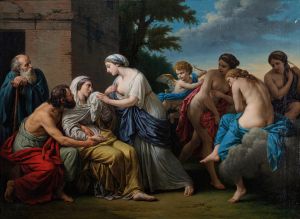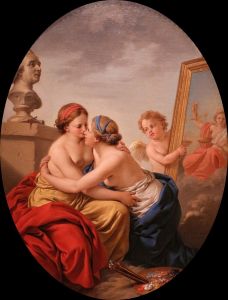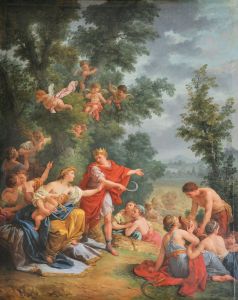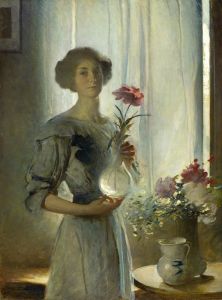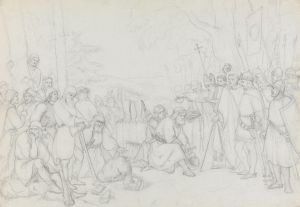
Les Grâces lutinées par les amours
A hand-painted replica of Louis-Jean-François Lagrenée’s masterpiece Les Grâces lutinées par les amours, meticulously crafted by professional artists to capture the true essence of the original. Each piece is created with museum-quality canvas and rare mineral pigments, carefully painted by experienced artists with delicate brushstrokes and rich, layered colors to perfectly recreate the texture of the original artwork. Unlike machine-printed reproductions, this hand-painted version brings the painting to life, infused with the artist’s emotions and skill in every stroke. Whether for personal collection or home decoration, it instantly elevates the artistic atmosphere of any space.
Louis-Jean-François Lagrenée was a prominent French painter of the 18th century, known for his works that often depicted mythological and allegorical subjects. One of his notable paintings is "Les Grâces lutinées par les amours," which translates to "The Graces Teased by the Loves." This artwork exemplifies Lagrenée's mastery in capturing the elegance and charm characteristic of the Rococo style, which was prevalent during his time.
"Les Grâces lutinées par les amours" is a fine representation of the Rococo movement, which emphasized lightness, grace, and playful themes. The painting features the Graces, figures from classical mythology who personified beauty, charm, and grace. They are often depicted as three sisters and are associated with the goddess Venus. In this particular work, the Graces are being playfully teased by the Amours, or Cupids, who are also figures from classical mythology known for their mischievous nature and association with love and desire.
Lagrenée's depiction of this scene is characterized by soft, delicate brushwork and a pastel color palette, which are hallmarks of the Rococo style. The composition is dynamic, with the figures arranged in a way that suggests movement and interaction. The Graces are portrayed with an ethereal beauty, their forms elegantly intertwined, while the Amours add a sense of liveliness and whimsy to the scene.
The painting reflects the influence of Lagrenée's academic training and his exposure to the works of other Rococo artists. He studied at the prestigious Académie Royale de Peinture et de Sculpture in Paris and later became a member of the institution. His education and connections allowed him to develop a style that was both refined and popular among the French aristocracy of the time.
Lagrenée's work was well-received during his lifetime, and he held several important positions, including that of a court painter for Empress Catherine II of Russia. His ability to blend classical themes with the playful elements of Rococo made his paintings appealing to the tastes of the period.
"Les Grâces lutinées par les amours" is an excellent example of how Lagrenée was able to convey a sense of elegance and sophistication while also incorporating a lighthearted and playful narrative. The painting not only showcases his technical skill but also his ability to engage viewers with a charming and delightful scene.
Today, Lagrenée's works, including "Les Grâces lutinées par les amours," are appreciated for their contribution to the Rococo movement and their reflection of 18th-century French art and culture. His paintings can be found in various museums and collections, where they continue to be studied and admired for their artistic merit and historical significance.






